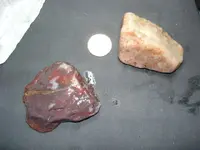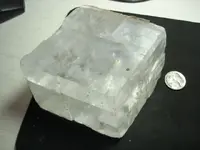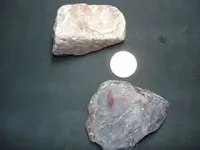coinman66
Hero Member
- Joined
- Nov 23, 2006
- Messages
- 604
- Reaction score
- 9
- Golden Thread
- 0
- Location
- Central Illinois
- Detector(s) used
- Whites Eagle II SL 90
Does anybody know what these rocks are? Any help would be greatly appreciated! The coin for scale is a nickel, also i took one pic which i think is the last one, wet. The big cubical rock was brought back from the southwest U.S., and the other two were found by me around a river in east central Illinois. Any help would be greatly appreciated. Im thinking about tumbling the smaller two rocks, what do you think? Thank you for your input.










